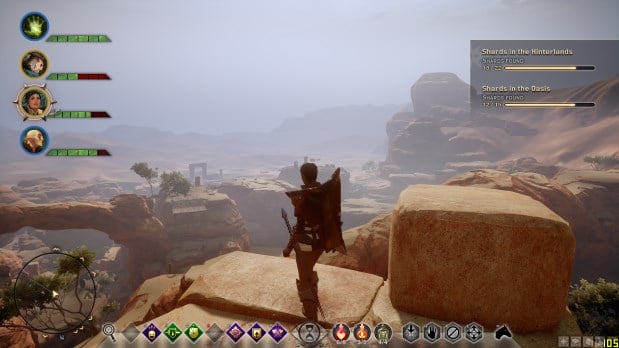Dragon Age: Inquisition Reviewed And Benchmarked
Introduction: Dragon Age: Inquisition
To say that BioWare has something to prove with Dragon Age: Inquisition is something of an understatement. The first Dragon Age: Origins was a colossal, sprawling, unabashed throwback to classic RPGs. Origins introduced gamers to the world of Thedas. As a newly-minted Grey Warden, players were tasked with stopping a deadly invasion of darkspawn -- creatures that had laid waste to vast swathes of the continent in ages past and ground entire nations into dust. The game took place over a relatively short span of time, but featured a wide array of memorable locations, landmarks, and NPCs.
One of Dragon Age: Origins most prized features was the intricate, genuinely different backstories that each of the races and social classes came from -- if you started DAO as a Mage, your first few hours of play were completely different then if you chose a Dalish Elf, Dwarf, or Human Noble. The game adroitly modeled both racism and prejudice -- Dwarf Nobles treat the common folk as though they're nonexistent, and Mages of any race are kept under tight control, for fear they will unleash havoc or fall prey to the demonic forces that lurk within the spirit world.
The sequel, Dragon Age II, was a vastly different game. Instead of a sprawling epic, BioWare focused its storytelling on the events within the city of Kirkwall. The game takes place across three acts, with a gap of several years between each act. It dumped the much-beloved Origin sequences and most of the customization options. The rich tactical gameplay of Origins was jettisoned in favor of a twitchy action-RPG combat model. Players could only swap out the armor of the main character, significantly limiting customization options.
All RPGs tend to re-use environments, but in Dragon Age II it went far beyond repetitive tile sets. Virtually every cave, house, and cavern followed the same layout. Limits on the graphical engine meant that while the story took place over nine years, the characters themselves never aged. Dragon Age II wasn't a bad game, but it played completely differently from its predecessor, with fast-paced twitch combat, fresh waves of enemies that spawned in close proximity, and without the script options that allowed players to fine-tune the responses of AI controlled party members.
With Dragon Age: Inquisition, BioWare promised to return to the elements that made the series great, keep the excellent storytelling that was present in both predecessors, and offer a vast epic that would appeal to all players.
Here's the amazing thing: They actually pulled it off. Dragon Age: Inquisition isn't perfect -- there are bugs and issues dogging the game -- but despite the problems, this is one of the most expansive, incredible, and jaw-dropping gorgeous RPGs I've ever played. Its combination of tightly-focused story and broad worldbuilding are going to be a model for this kind of game for years to come.
One of Dragon Age: Origins most prized features was the intricate, genuinely different backstories that each of the races and social classes came from -- if you started DAO as a Mage, your first few hours of play were completely different then if you chose a Dalish Elf, Dwarf, or Human Noble. The game adroitly modeled both racism and prejudice -- Dwarf Nobles treat the common folk as though they're nonexistent, and Mages of any race are kept under tight control, for fear they will unleash havoc or fall prey to the demonic forces that lurk within the spirit world.
The sequel, Dragon Age II, was a vastly different game. Instead of a sprawling epic, BioWare focused its storytelling on the events within the city of Kirkwall. The game takes place across three acts, with a gap of several years between each act. It dumped the much-beloved Origin sequences and most of the customization options. The rich tactical gameplay of Origins was jettisoned in favor of a twitchy action-RPG combat model. Players could only swap out the armor of the main character, significantly limiting customization options.
All RPGs tend to re-use environments, but in Dragon Age II it went far beyond repetitive tile sets. Virtually every cave, house, and cavern followed the same layout. Limits on the graphical engine meant that while the story took place over nine years, the characters themselves never aged. Dragon Age II wasn't a bad game, but it played completely differently from its predecessor, with fast-paced twitch combat, fresh waves of enemies that spawned in close proximity, and without the script options that allowed players to fine-tune the responses of AI controlled party members.
With Dragon Age: Inquisition, BioWare promised to return to the elements that made the series great, keep the excellent storytelling that was present in both predecessors, and offer a vast epic that would appeal to all players.
Here's the amazing thing: They actually pulled it off. Dragon Age: Inquisition isn't perfect -- there are bugs and issues dogging the game -- but despite the problems, this is one of the most expansive, incredible, and jaw-dropping gorgeous RPGs I've ever played. Its combination of tightly-focused story and broad worldbuilding are going to be a model for this kind of game for years to come.








